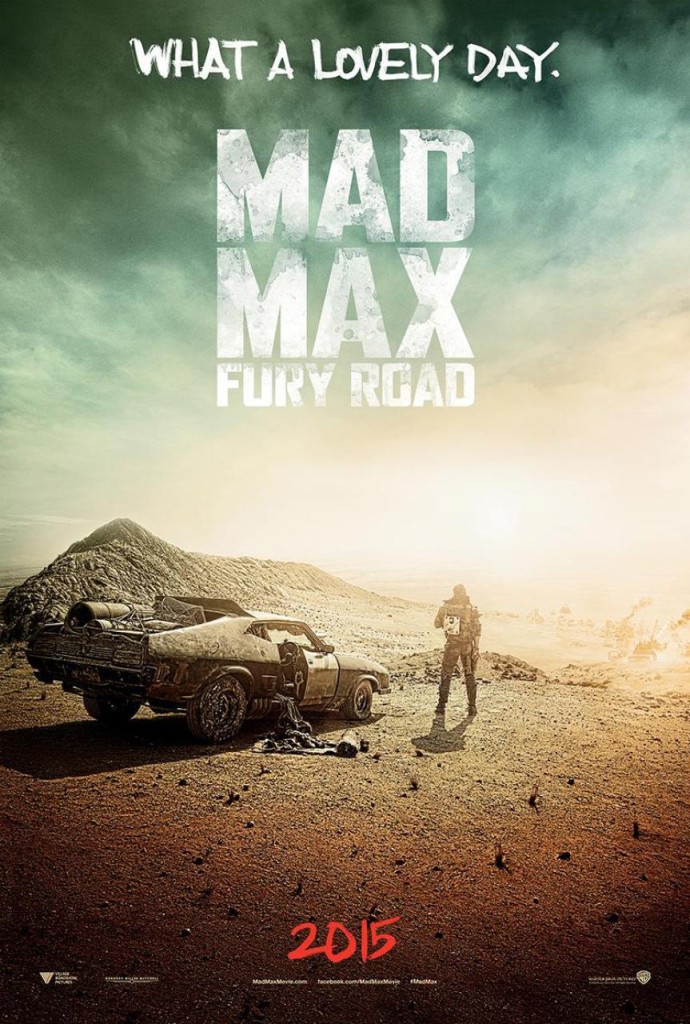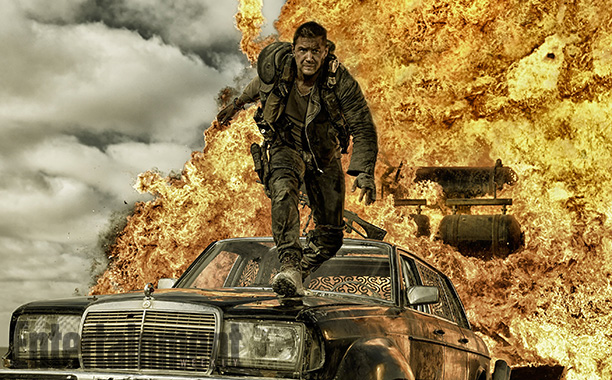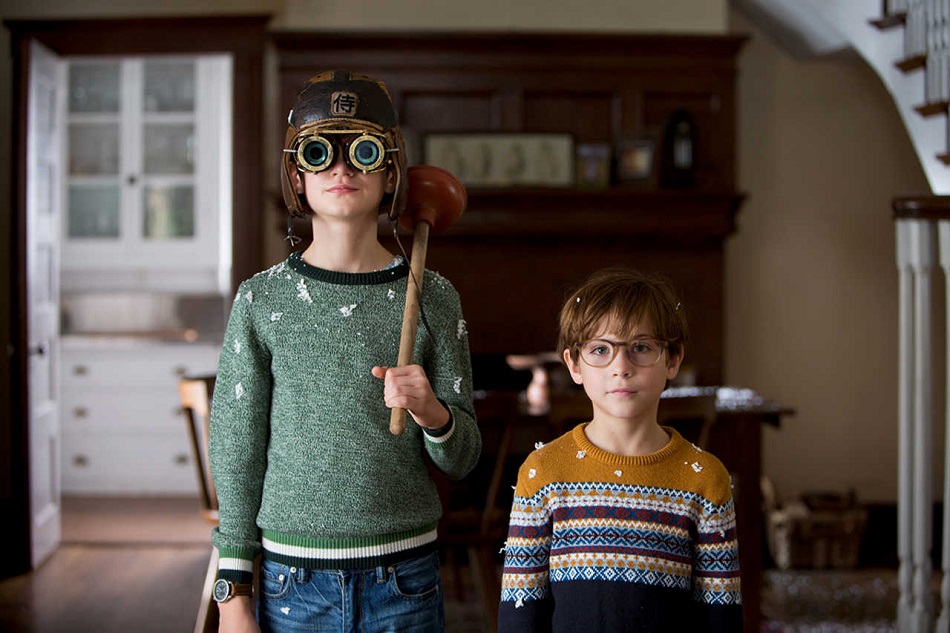Ummm…wow. So that is what a summer movie can be. A movie that uses it’s massive, unencumbered budget to elevate an imagination to heights rarely reached. It’s so scarcely seen in the modern blockbuster landscape that when one comes along the sheer dodo-like quality can elevate it. But Mad Max: Fury Road is truly the work of a visionary – in every sense of the term – and George Miller has delivered one of the best action blockbusters I’ve ever seen.
Hyperbole? Maybe when I reflect on the movie in a decade. But from the opening frame Miller never relents, pouring on stunningly saturated visuals – desert landscapes that stretch endlessly. His story is scarce, serving as no more than a shell for the film’s larger themes. Max Rockatansky (Tom Hardy) is on the run immediately. A band of raving, religious, albino lunatics are after his blood. Max is a universal donor and with disease rampant in the largely albino community he is a perfect blood bag for short-term replenishment.
 Max is captured in the film’s first (and shortest) desert car chase extravaganza. He’s returned to the albino stronghold for a good upside down blood-letting. Here we witness the religious zealotry of Immortan Joe (Hugh Keays-Byrne, the villain Toecutter from the original Mad Max) who lords over the populace by hording the city’s water supply and only releasing a little at a time for the citizens to bask in. Joe is a patriarchal maniac of the highest order whose body is deteriorating (he wears a breathing mask that is fashioned from a human skull) and craves an heir to continue his sickening legacy.
Max is captured in the film’s first (and shortest) desert car chase extravaganza. He’s returned to the albino stronghold for a good upside down blood-letting. Here we witness the religious zealotry of Immortan Joe (Hugh Keays-Byrne, the villain Toecutter from the original Mad Max) who lords over the populace by hording the city’s water supply and only releasing a little at a time for the citizens to bask in. Joe is a patriarchal maniac of the highest order whose body is deteriorating (he wears a breathing mask that is fashioned from a human skull) and craves an heir to continue his sickening legacy.
That might be a problem however when Joe’s most skilled warrior Imperator Furiosa (Charlize Theron) – who is supposedly on a supply run – makes a detour away from the Bullet Farm towards the unknown desert landscape. Soon Joe and his band of hairless warriors are in hot pursuit – including Max who is tied to the front of a rig while his blood is drained into Nux (Nicholas Hoult) – a rather tiny zealot who serves Joe unconditionally until, in his words, he ascends to Valhalla.
What follows this brief set up is a cross country blazing 1.5 hour chase like nothing that the screen has ever captured. Furiosa is carrying Joe’s 5 beautiful wives/sex slaves – at least two of them pregnant – with the hopes of finding safety in “the green place” – an idyllic setting where she grew up. The film follows their path in a structure more akin to movements from an orchestra than a typical three-act film. The crescendo of action and mayhem is immense, with the only respites coming in the brief separation between the pursuers and pursues.
Miller has mentioned in interviews that he wanted to make a film that could be shown in any country without subtitles. And although Fury Road is in English it’s easy to see what he was attempting to accomplish. The film is named after the title character – yet Max is either chained, incapacitated or wearing a metal mask (Hardy channeling his inner Bane yet again) for the lion’s share of the movie.
If there is a main character here it’s almost certainly Charlize Theron’s Furiosa. Theron may be the finest working actress in Hollywood today and the emotional heft she brings to a potentially lifeless part is stirring. She completely sells the action and insanely silly costumes all around her. This is her movie and Miller knows it.
Literally nothing about the marketing of Fury Road suggests that the film is anything but a testosterone driven thrill-ride. Oh trust me, that’s there. But Miller does something brilliant by subverting our expectations of what this kind of movie typically is. Sure, Max saves some damsels in distress every now and again but this is truly a film about feminist empowerment, striking down a vicious patriarchy in favor of a richer society. It accomplishes what the best exploitation of the 1970’s did, something cinema doesn’t shoot for nearly as often today.
It’s odd to hand the keys of cinematic progression to a 70-year-old filmmaker who hasn’t made a non-animated film in 17-years (his last was the criminally underrated Babe: Pig in the City.) But that’s exactly what Warner Brothers did. They looked at Miller and said, “You know that franchise you were responsible for 40 years ago? Let’s talk about rebooting that universe.” Miller took their money, headed to the deserts of Namibia and instead of serving studio expectations – he completely obliterated them.





